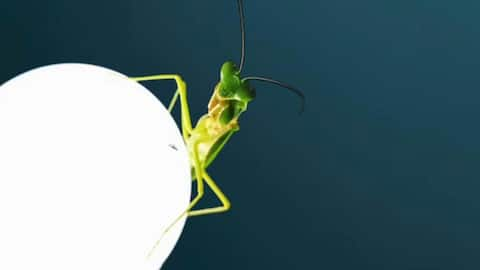Researchers discover why insects are attracted to artificial light
What's the story
A recent study published in the journal Nature Communications has shed light on why insects are drawn to artificial light sources. Researchers from Imperial College London and the McGuire Center for Lepidoptera and Biodiversity at the Florida Museum of Natural History discovered that artificial light interferes with insects' ability to navigate. Co-lead author Samuel Fabian stated, "What we are bringing here is just linking this behavior to an insect behavior that was considered a puzzle until now."
How it works
Artificial light scrambles insects' orientation
The scientists conducted experiments using high-speed infrared cameras in an insect flight arena and observed insects in the Costa Rican jungle. Co-lead author Yash Sondhi explained, "It's not a light attraction issue but an orientation issue." The team found that insects didn't fly straight toward the light but circled it while trying to align their backs with the light source, a behavior known as a "dorsal light response."
Theories
Disproving previous theories
Previously, it was thought that insects were either confusing lights for celestial bodies or seeking warmth from the emitted heat. However, new findings debunk those theories. Florian Altermatt, an ecologist at the University of Zurich, called the study a "satisfying answer to a long-standing phenomenon." The research demonstrates that artificial light confuses insects' sense of direction, causing them to fly in circles or dive toward the ground.
Future insights
Exceptions and future research
Interestingly, the study found two exceptions: oleander hawk moths and fruit flies, which flew normally in the presence of light. Fabian noted, "We would like to pick apart some of these exceptions in future research." Further studies are needed to determine if insects use the sky's light for navigation, regardless of artificial light presence, according to animal and visual ecologist Brett Seymoure of the University of Texas at El Paso.
Effects and solutions
Exploring light pollution's effects and potential solutions
Scientists, including Seymoure and Sondhi, are collaborating to investigate unanswered questions about the effects of light pollution on insects, such as susceptibility at different latitudes. Another area of inquiry is whether adding fixtures to lights could make streetlights less appealing to flying insects. Seymoure said, "Now that we have the mechanism of how moths are flying to these lights, we can now better design light fixtures that will make it so that they're not actually doing this behavior."
